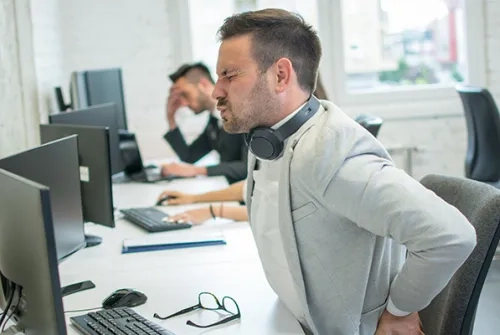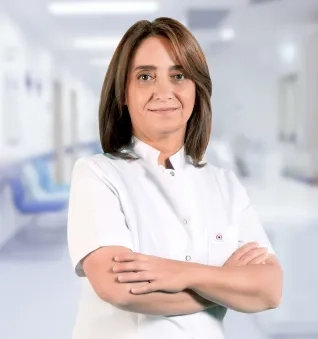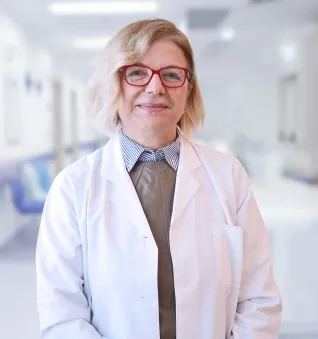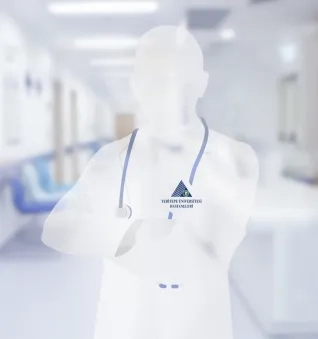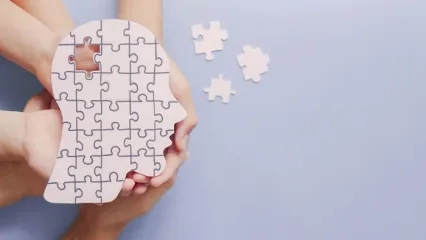Alo Yeditepe
Alo Yeditepe
Lumbar Disc Herniation (Herniated Disc)
What is a Herniated Disc?
Our spine is composed of bone structures connected to each other by discs (cartilage). The function of these discs between the bones in our spine is to carry a load. This robust connective tissue, which carries a load, also allows movement. In the elderly, the discs calcify by losing water, and movement restrictions occur. Disks consist of two main structures: There is a core in the inner layer with high water content, which is responsible for load carrying. On the other hand, a robust membrane layer surrounds this core. The rupture of this membrane layer by being forced excessively can cause the inner core to slide out. In this case, a herniated disc occurs. The dangerous aspect of the herniated disc is caused by the fact that this core that slides out harms the nerve structures. Severe pressure or nerve damage can lead to conditions up to paralysis in the legs or feet and urinary or fecal incontinence and cannot be compensated if the treatment is delayed too much.
The complaints encountered in lumbar disc herniation are low back pain, pain, and numbness in the legs, which is called sciatica, and weakness in the feet.
Lower back and leg pain can have many causes other than a herniated disc. Since lower back pain can sometimes occur in serious conditions such as severe infections, cancers, tumors, and spinal fractures, a correct diagnosis must be made without delay.
What are the Treatment Methods?
Approximately 80-90% of patients with acute lower back pain can recover without surgical intervention or other treatments. Surgery is required in only 2-3% of patients with lower back pain. As the prevalence of lower back pain in society has reached 80%, the frequency of lumbar-related surgical treatments is increasing day by day. Despite non-surgical methods applied, if your pain impairs your quality of life or if there is a loss of strength and numbness in the leg, surgical treatment may be needed. Conditions such as urinary or fecal incontinence, paralysis and muscle atrophy in the foot are conditions that you have already lost the chance of benefiting from surgical treatment and that constitute a lifelong disability and cannot be cured. Therefore, one must not wait until the last moment for the treatment.
Non-Surgical Treatment Methods
Non-surgical treatments can be beneficial in cases where lower back pain is not as advanced as indicated above. These treatments are applied to reduce nerve, disc injury, and protect the spine for the purpose of improving physical condition and increasing overall body functionality. Non-surgical methods are short-term rest, anti-inflammatory therapy to reduce edema and pain in the lower back, analgesics to control pain, physical therapy, exercises, or injections (facet or epidural steroid) made to the lumbar region. Light stretching and proper upright posture exercises are primarily recommended to reduce your lower back and leg pain. After the pain is alleviated, exercises that increase flexibility, strength, and endurance and help to return to normal daily life early can be performed.
Surgical Treatment
The purpose of surgery is to relieve your pain and recover strength losses. The level of benefit that each patient will acquire from surgery may be different. For this reason, it will be appropriate for the patient to discuss the expectations from the surgery with the doctor.
The microsurgical method is the gold standard in surgery today. Other methods applied include endoscopic surgeries and fusion or support surgeries performed with metallic implants placed on the vertebrae. The surgical method that is the most suitable for the patient is selected. Because applying a method that is not suitable for the patient, for example, just removing the hernia may cause the recurrence of the hernia, requiring other surgeries. In some cases, on the other hand, only a minimal surgery performed through microsurgery can solve the problem for a lifetime.
This content was prepared by Yeditepe University Hospitals Medical Editorial Board.
”
See Also
- What is Parkinson's Disease? What are the Symptoms of Parkinson's Disease?
- What is Scoliosis? Exercise Methods in Scoliosis Treatment
- Benefits of Being Limber
- Current Approach to Dizziness Treatment: Balance Perception Rehabilitation
- Benefits of Physiotherapy and Rehabilitation in Spinal Cord Injury
- Fibromyalgia in Children
- Spinal Cord Injuries and Symptoms
- Epilepsy Symptoms, Diagnosis and Treatment Methods
- Multiple Sclerosis (MS) Disease, Symptoms, and Treatment
- Persistent Fatigue of Unknown Cause Could Indicate MS!
- Neurological Involvement
- Beware of Joint and Muscle Pain in the Winter Months!
- What is Epilepsy?
- Sports Injuries
- 10 Important Myths in Alzheimer's Disease
- School Stress Invites Sleepwalking
- Daughter-in-Laws Care for Alzheimer's Patients
- As Insomnia Increases, Its Harmful Effects on the Immune System Also Increase
- 8 Tips for Better Sleep
- Vitamin D Deficiency Disrupts the Course of MS
- Initial Symptoms of ALS Considered To Be Nerve Compression
- Patients with Refractory Epilepsy May Lose Time Until They Receive a Proper Diagnosis
- Piriformis Syndrome May Be the Cause of Low Back Pain and Numbness in the Legs
- What is Lymphedema?
- The Way to Peace: Yoga
Alo Yeditepe

